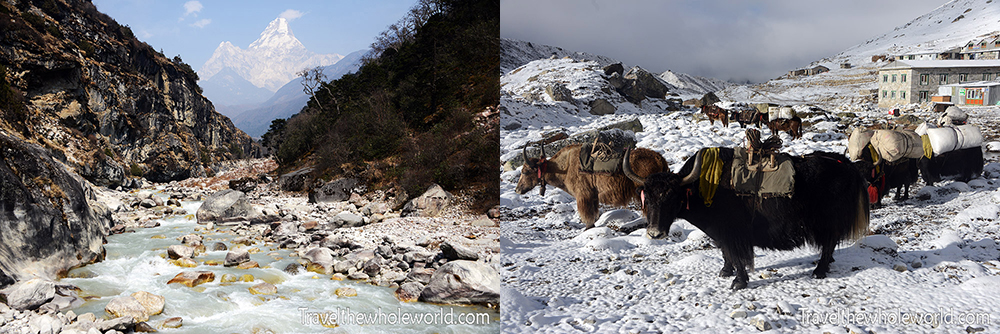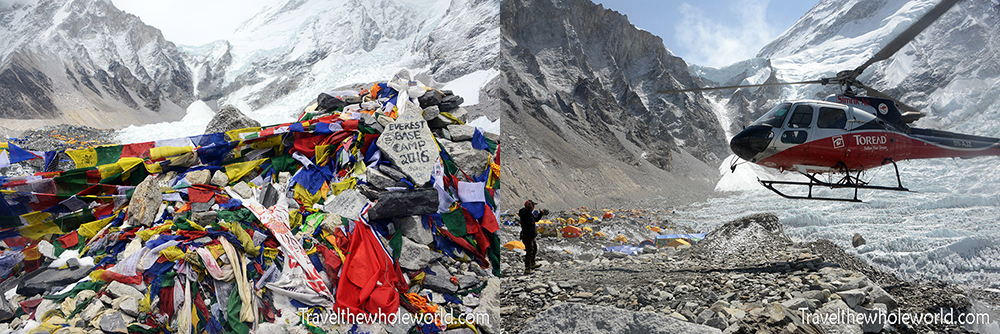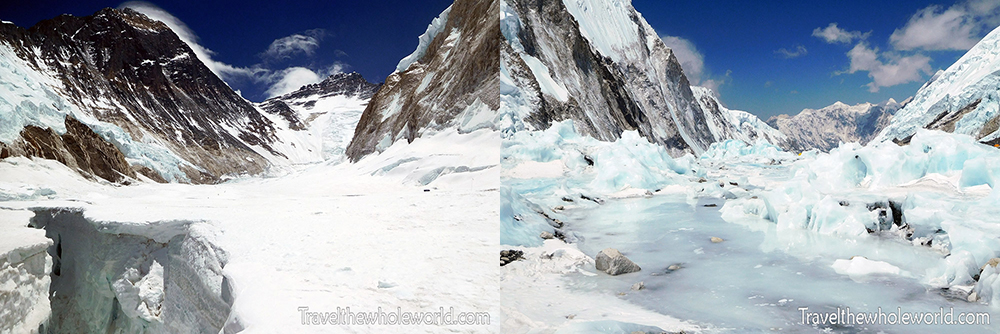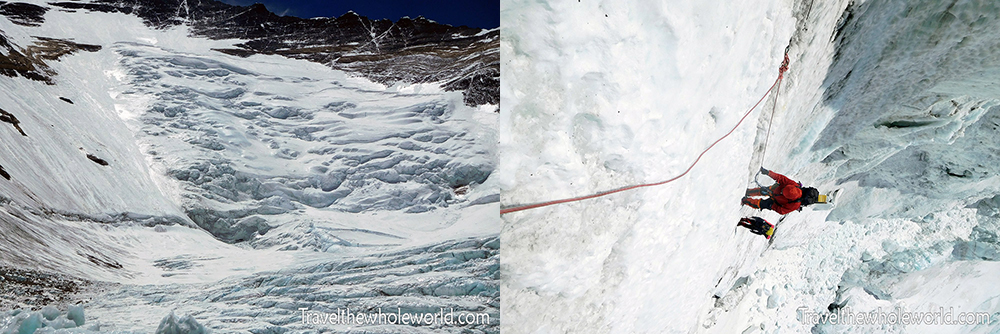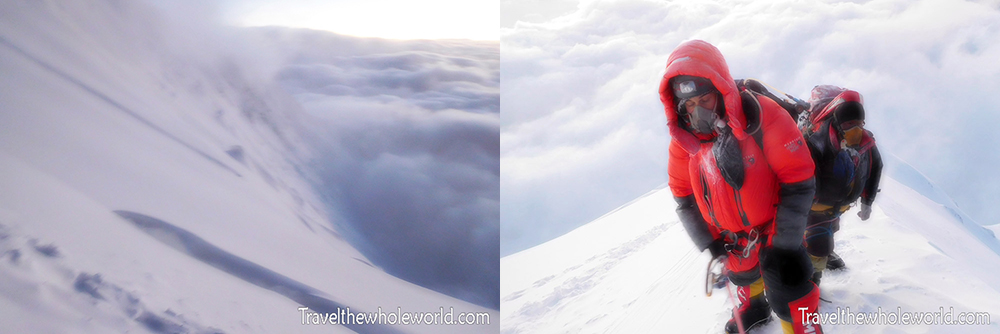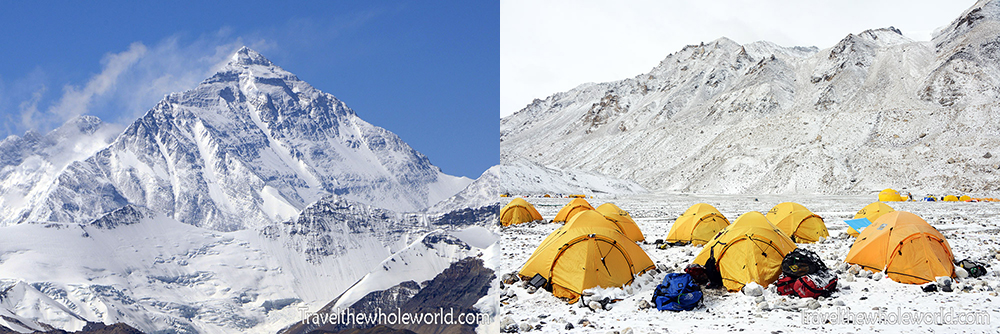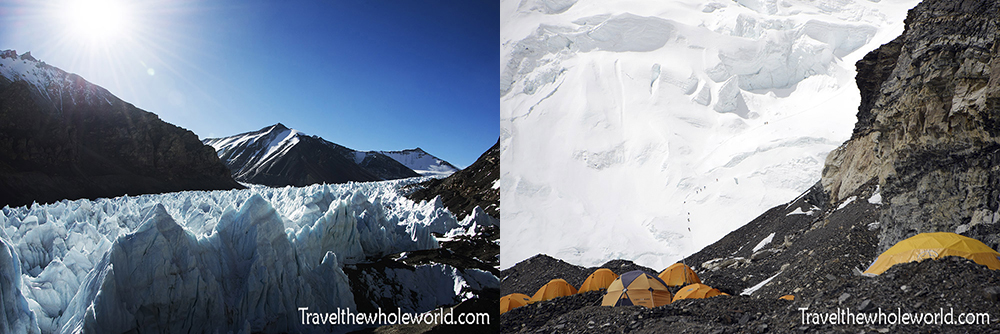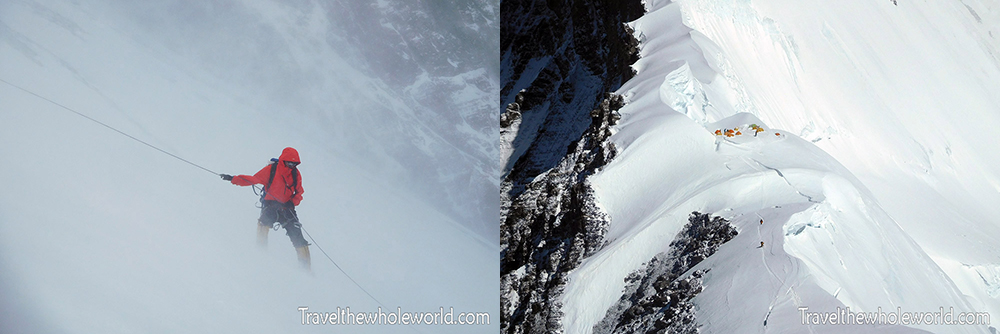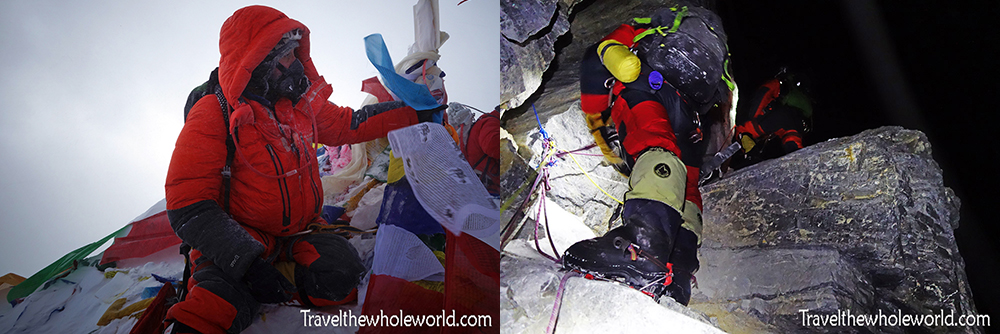Climbing Mt. Everest
Reaching the top of the world has been a dream of mine as long as I can remember. I never thought I’d have a shot of this, but was incredibly lucky to be able to attempt the mountain in 2016. I had long been intimidated by the mountain, but I actually felt well prepared and strong the entire climb. My summit day was met with tragedy and bad weather. Only 300 feet from the top of the world I made a difficult decision to turn around due to several deaths and deteriorating conditions that night. It wasn’t the kind of summit day I had hoped for, but of course I was well aware of the risks before I stepped foot on the mountain. I’m happy to say that I’ve not given up on my hopes of reaching the top of the world, and am currently climbing again from the Tibet side. I won’t be able to post updates until I’m back off the mountain, which will be before June 1st.
Climbing Everest From Nepal
Hiking to Base Camp
Click here to see the hike to Everest Base Camp through the Khumbu Valley
Before you can climb Mt. Everest from the Nepal side you have to first get there! Since Mt. Everest is located deep in the Himalayas, getting to the mountain is still an adventure by itself. One of the most popular treks in the world; the way to Mt. Everest’s base camp takes travelers through the Khumbu Valley as you hike along some of the planet’s most impressive mountains. Because the final destination is 17,500 feet (5,300 meters), the hike typically takes about a week. Trekkers will stay in tea houses or camp along the way; and will get to enjoy learning the culture of the Sherpa people. Along the way you’ll also pass one of the most famous peaks in the world, Ama Dablam.
Nepal Everest Base Camp
Click here to see Nepal Everest Base Camp
Nepal’s Everest Base Camp is by far the largest mountaineering base camp in the world. Hundreds of climbers camp here in order to prepare for the actual climb. With the combination of Sheraps on the expedition as well as those delivering supplies and the hundreds of trekkers that visit, Everest Base Camp sees thousands of people each year. Everest Base Camp is a mini city and the main destination of most who hike in the Khumbu Valley.
Khumbu Ice Fall
Click here to see the Khumbu Icefall
The first challenge to climbing Mt. Everest from the Nepal side is one of the most dangerous. The Khumbu Icefall begins just minutes from base camp and is a 2,000 foot (600 meter) climb through extremely unstable ice. Though the Khumbu Icefall is one of the most beautiful parts on the mountain, it’s filled with crevasses that open up without warning, ice seracs that threaten to topple any minute, and can even has giant ice blocks the size of houses that come crashing down from time to time.
Western Cwm
Click here to see the Western Cwm
The Western Cwm is the most straight forward part of climbing Mt. Everest from the south. The cwm begins from Camp I and has crevasses and a few walls to climb, but quickly turns into a gentle snowy slope that extends for miles to the bottom of the Lhotse Face. The Western Cwm is the safest area to be while on Mt. Everest, but still has an avalanche risk.
Lhotse Face
Click here to see the Lhotse Face
Beginning around 22,000 feet (6,700 meters), the Lhotse Face is where the extreme altitude begins. Halfway up the face is Camp III at 23,000 feet (7,000 meters) where some being to use supplementary oxygen. The Lhotse Face is one of the most dangerous places on the mountain because of the high risk of avalanches and rock falls.
Nepal Summit Day
Click here to see Nepal Summit Day
Climbers from the Nepal side will leave the Lhotse Face and reach the South Col located at 26,000 feet (8,000 meters). Climbers will often arrive to the South Col in the early afternoon, take a rest, then push for the summit that night. Summit day can take over 24 hours and is by far the most dangerous day of the entire climb. Challenges along the way are climbing up the Triangular Face to the Balcony, up to the South Summit, and from there the final challenge of the Hillary Step until reaching the top of the world.
Climbing Everest From Tibet
Tibet Base Camp
Click here to see Tibet Base Camp
Reaching Base Camp from Tibet is a completely different experience from the Nepal side. While Nepal requires a week long hike to 17,500 feet (5,300 meters), Tibet’s Everest Base Camp has roads. Tibet’s Everest Base Camp is only a fraction of the size of Nepal’s, so here you’ll find mostly a deserted valley with few options. The highlights of Tibet’s side is that you can actually see Mt. Everest from camp. Otherwise the most interesting place is the local Buddhist monastery, which is actually the highest monastery in the world.
Tibet Advanced Base Camp Trek
Click here to see Tibet Advanced Base Camp Trek
Tibet’s Advanced Base Camp follows 15 miles (24 kilometers) of trail to the true base of Mt. Everest. The trail starts at 17,000 feet (5,000 meters) and after a night at Interim Base Camp it reaches ABC at 21,000 feet (6,300 meters). The beginning parts of the trails follow a valley straight towards Everest where even some wildlife like blue sheep are sometimes spotted. The trail turns to loose scree and rock and passes some of the most impressive ice formations on earth.
North Col & High Camps
Click here to see the North Col & High Camps
For climbers on the Tibetan side of Mt. Everest, the North Col is their transition from hiking to actual mountaineering. The North Col sits at 23,000 feet (7,000 meters) and requires going up a steep and exposed face. From the North Col, most climbers start to use oxygen as they head up to Camp II followed by Camp III which is the highest camp in the world.
Top of the World
Click here to see my final climb to the Top of the World
Either late at night or very early in the morning, the final push to the top of the world begins from 27,000 feet (8,300 meters) on the Tibet side. Unlike the Nepal side, this portion of the mountain is covered in rock and ice and is much more technical in comparison. The famous three steps each make a small technical challenge which shouldn’t be overestimated at altitudes just below the highest point on earth.
